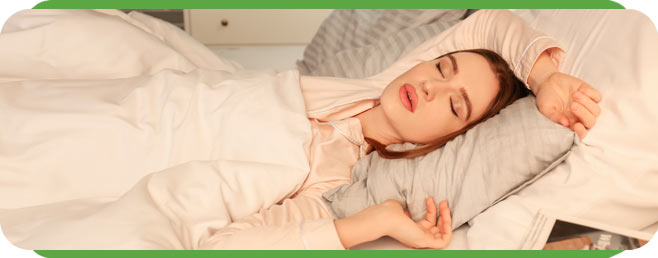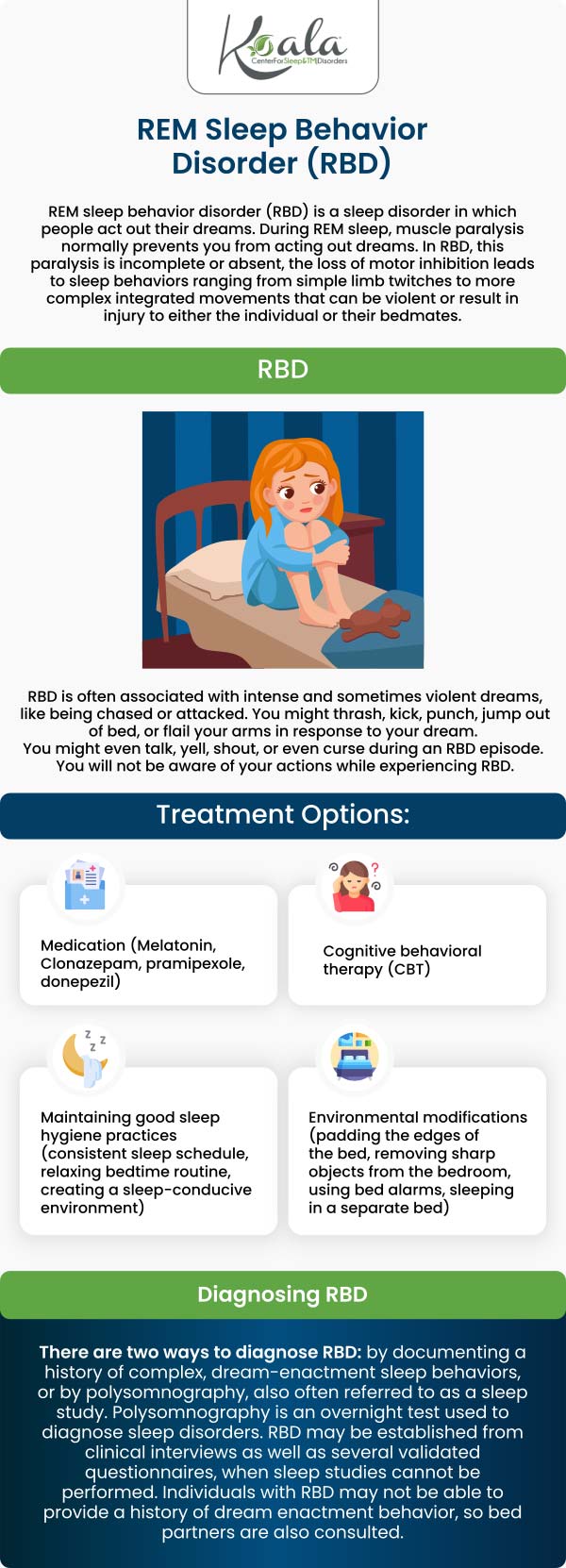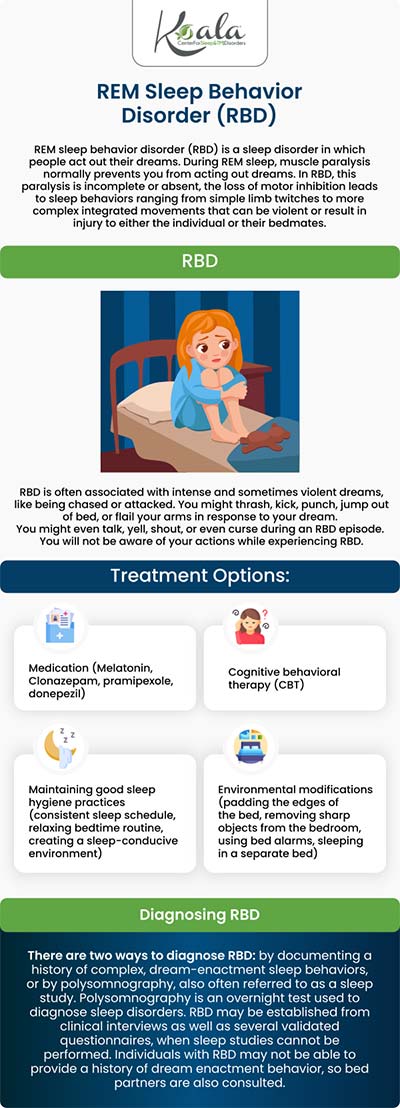Signs of REM Sleep Behavior Disorder
If you believe you are having signs of REM sleep behavior disorder, talk to our team of healthcare providers today and receive comprehensive treatment at Koala® Center For Sleep & TMJ Disorders. For more information call us at one of our clinics today or request an appointment online. We serve patients from all over the USA. Locations in Bloomington IL, Peoria – Dunlap IL, El Paso TX, Wausau WI.




Table of Contents:
What are the signs of REM sleep?
How is REM behavior disorder diagnosed?
What happens if you don’t have REM sleep?
How is REM sleep behavior disorder treated?
REM sleep is the phase of sleep in which our brains are most active and is characterized by very quick—or rapid—eye movements during sleep. This is also the phase of sleep whereby we experience dreaming. Therefore, REM sleep behavior disorder is a sleep disorder specifically associated with this phase of sleep and is characterized by moving sporadically or acting out our dreams. Normally, during REM sleep our bodies are temporarily paralyzed, which prevents us from moving in our sleep to avoid harming our bodies. However, some people do not experience this paralysis and can unconsciously act out their dreams, which often leads to somnambulance or somnambulism (sleepwalking) and somniloquence or somniloquy (sleep talking).
The brain and body go through a number of characteristic changes for REM sleep, including:
– Body temperature changes
– Body twitching affecting arms, legs, and face
– Increased blood pressure
– Increased brain activity similar to awake states
– Increased heart rate
– Increased oxygen use by the brain
– Rapid eye movements
– Rapid, irregular breathing
– Sexual arousal
– A state of temporary paralysis (atonia)
A diagnosis for REM sleep behavior disorder is based on the following criteria:
– Repeated times of arousal during sleep involving talking, making noises, or performing complex motor behaviors, such as running movements, that often relate to what is happening in the dream
– Recalling dreams associated with these movements/sounds
– If awakening during when the episode is occuring, the individual is alert and not confused or disoriented
– Polysomnography (sleep study) shows increased muscle activity during REM sleep
– Sleep disturbance is not caused by external stimuli, medication, a mental health disorder, or substance abuse
Studies have been conducted on the effects of little to no REM sleep, which found that:
– Lack of REM can also lead to an increase in migraine headaches, which is due to changes in the levels of key brain proteins associated with causing migraine headaches
– Too little REM sleep may also increase the risk for dementia later in life, as much as a 9 percent increase risk of dementia and a 9 percent increase in the risk of Alzheimer’s disease
– Lack of rapid eye movement sleep may interfere with long-term memory due to reduced cell proliferation in the part of the brain associated with long-term memory
– Weight problems are associated with a lack of REM sleep, which has been associated with weight problems in both teenagers and children
– Coping skills and reflexes may diminish, resulting in a reduced ability to handle difficult situations and to show defensive responses in threatening environments
There are several behaviors that a person can practice to improve their REM sleep quality, and many of these can help with sleep in general. Some are natural ways to improve the quality of REM sleep, while others are ways to minimize the risk of injury during an episode of REM sleep behavior disorder, and include:
– Avoid consuming alcohol and caffeine
– Get plenty of daily exercises
– Sleepaway from windows, if possible
– Place bed against a wall or install guard rails to prevent falling out of bed
– Remove furniture with sharp corners or place protective coverings on corners and remove potentially dangerous objects from the bedroom, such as scissors, glass, and heavy objects
– Sleep in a separate room from others
At Koala® Center For Sleep & TMJ Disorders, we care about the quality of your sleep. Our kind and compassionate professionals are dedicated to helping you improve your quality of life by getting a good night’s rest. To provide care for as many people as possible, Koala® Center For Sleep & TMJ Disorders has convenient locations near you in Bloomington, IL; Peoria – Dunlop, IL; Wausau, WI; and El Paso, TX. To find out which Koala® Center For Sleep & TMJ Disorders is closest to you, visit our Locations page! We look forward to serving you!

Additional Services You May Need
▸ KoalaKIDZzz®
▸ Sleep Apnea
▸ Snoring
▸ TMJ Disorder
▸ Fatigue
▸ Sleep Disorders
▸ Weight Loss
▸ CPAP Alternative
▸ Oral Appliances




